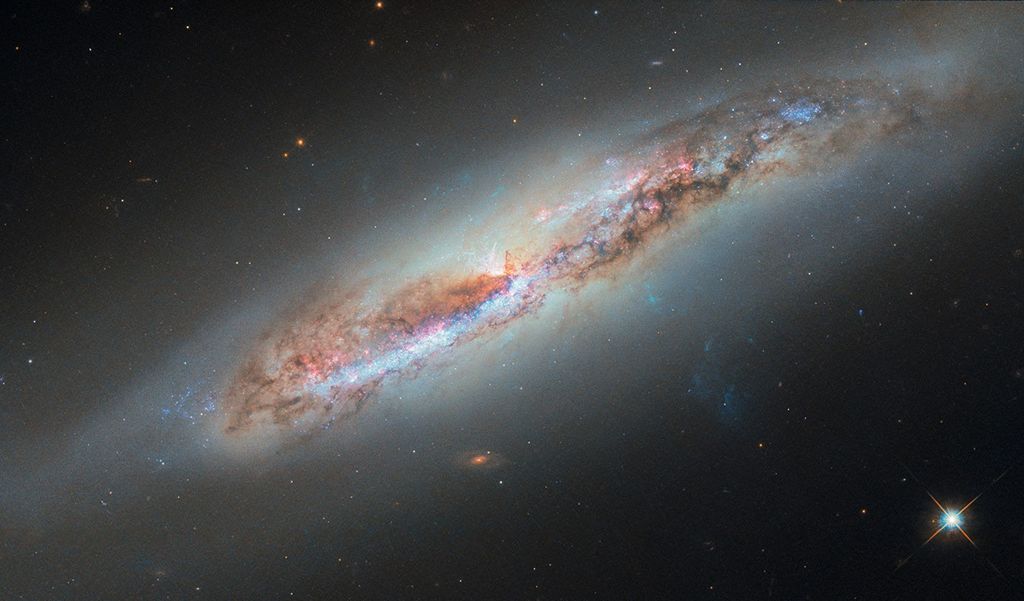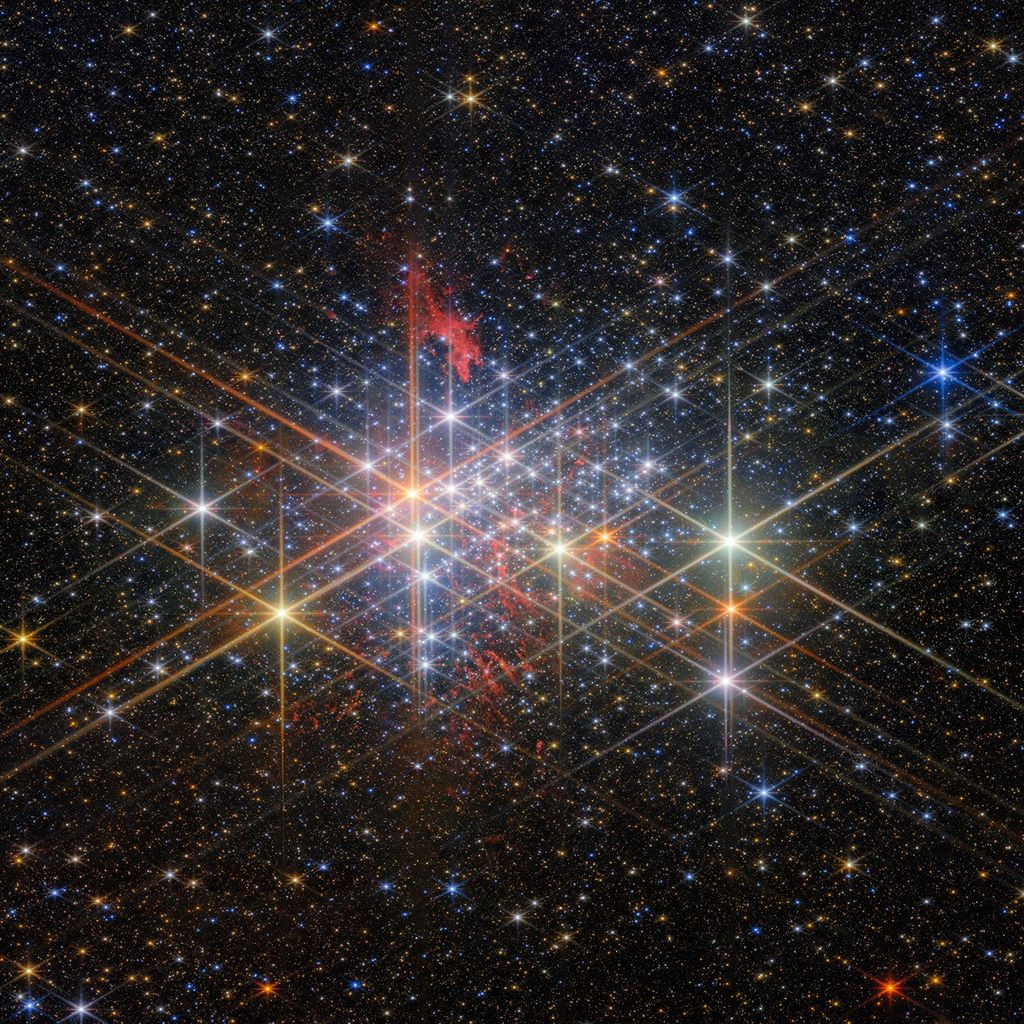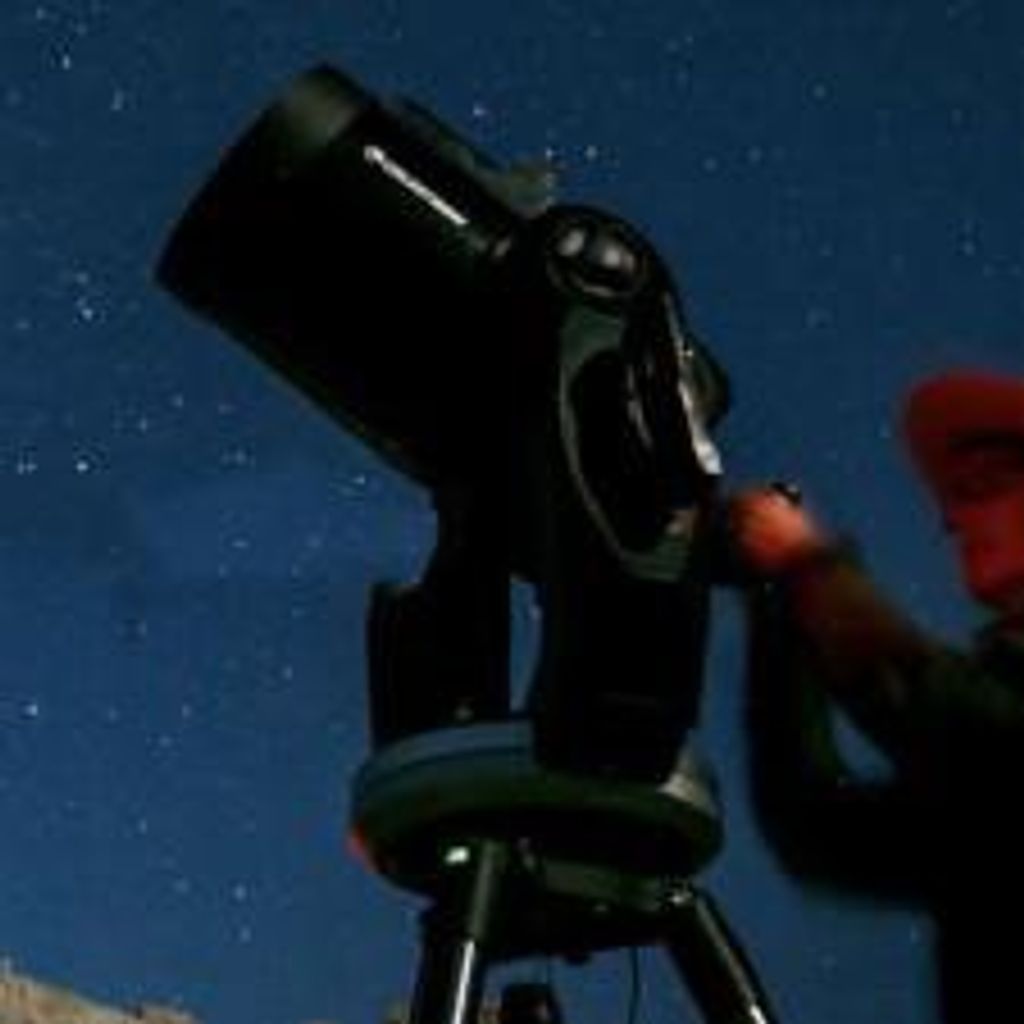1 min read
Compass and Scale Image for Galaxy Cluster MACS J0416.1-2403

These two Hubble Space Telescope images reveal an array of faraway galaxies, many of which existed at least 12.9 billion years ago and earlier. The circles pinpoint the most distant galaxies.
The images were taken simultaneously by two of Hubble's science instruments. The image at left, taken in near-infrared light by the Wide Field Camera 3, shows a very massive cluster of galaxies, called MACS J0416.1-2403, the large, bright galaxies at the center of the image. The cluster's immense gravitational field magnifies and brightens the images of faint galaxies far behind it, in a phenomenon called gravitational lensing.
The image at right, taken in visible light by the Advanced Camera for Surveys, is a parallel field. This view reveals myriad galaxies that make up a general background population, not compacted into a galaxy cluster.
Astronomers examined these Hubble images, along with observations taken in near-infrared light with the Spitzer Space Telescope, to determine the distances of the reddest-looking galaxies. Their light is stretched by the expansion of the universe. So the redder a galaxy looks, the farther away it is. These very dim objects may be more representative of the early universe, and offer new insight on the formation and evolution of the first galaxies.
About the Object
- R.A. PositionR.A. PositionRight ascension – analogous to longitude – is one component of an object's position.04h 16m 09s.90
- Dec. PositionDec. PositionDeclination – analogous to latitude – is one component of an object's position.-04h 16m 09s.90
- ConstellationConstellationOne of 88 recognized regions of the celestial sphere in which the object appears.Eridanus
- DistanceDistanceThe physical distance from Earth to the astronomical object. Distances within our solar system are usually measured in Astronomical Units (AU). Distances between stars are usually measured in light-years. Interstellar distances can also be measured in parsecs.Redshift: z = 0.396
About the Data
- Data DescriptionData DescriptionProposal: A description of the observations, their scientific justification, and the links to the data available in the science archive.
Science Team: The astronomers who planned the observations and analyzed the data. "PI" refers to the Principal Investigator.MACS J0416-2403, MACS J0416.1-2403 is part of the Frontier Fields Program. These data were observed via the HST proposals: 13496: J. Lotz (STScI) et al.; 12459: M. Postman (STScI) et al. Supplemental data were obtained by proposal 13386, PI: S. Rodney (JHU) et al. The science team comprises: L. Infante (Pontifica Universidad Católica de Chile), W. Zheng (JHU), N. Laporte and P. Troncoso (Pontifica Universidad Católica de Chile), A. Molino (University of São Paulo, Brazil/Instituto de Astrofisica de Andalucia/CSIC, Spain), J. Diego (University of Cantabria, Spain), F. Bauer (Millennium Institute of Astrophysics, Chile/Space Science Institute, Boulder), A. Zitrin (Caltech), J. Moustakas (Siena College, NY), X. Huang (University of Science and Technology of China), X. Shu (Anhui Normal University, China), D. Bina (IRAP/CNRS Toulouse, France), G. Brammer (STScI), T. Broadhurst (University of Basque Country/IKERBASQUE, Basque Foundation for Science, Spain), H. Ford (JHU), and S. Garcia and S. Kim (Pontifica Universidad Católica de Chile). - InstrumentInstrumentThe science instrument used to produce the data.HST>ACS/WFC and HST>WFC3/IR
- Exposure DatesExposure DatesThe date(s) that the telescope made its observations and the total exposure time.January 5 - September 28, 2014
- FiltersFiltersThe camera filters that were used in the science observations.ACS/WFC: F435W (I) and F606W (R); ACS/WFC: F814W (I) and WFC3/IR F105W (Y); WFC3/IR: F125W (J), F140W (JH), and F160W (H)
- Object NameObject NameA name or catalog number that astronomers use to identify an astronomical object.MACS J0416-2403, MACS J0416.1-2403
- Object DescriptionObject DescriptionThe type of astronomical object.Strong-lensing cluster
- Release DateDecember 3, 2015
- Science ReleaseNASA Space Telescopes See Magnified Image of the Faintest Galaxy from the Early Universe
- Credit

These images are a composite of separate exposures acquired by the WFC3/IR and ACS/WFC instruments. Several filters were used to sample various wavelengths. The color results from assigning different hues (colors) to each monochromatic (grayscale) image associated with an individual filter. In this case, the assigned colors are: Blue: F435W (I) + F606W (R) Green: F814W (I) + WFC3/IR F105W (Y) Red: F125W (J) + F140W (JH) + F160W (H)

Related Images & Videos

Faint Compact Galaxy in the Early Universe
This is a Hubble Space Telescope view of a very massive cluster of galaxies, MACS J0416.1-2403, located roughly 4 billion light-years away and weighing as much as a million billion suns. The cluster's immense gravitational field magnifies the image of galaxies far behind it, in...
Share
Details
Claire Andreoli
NASA’s Goddard Space Flight Center
Greenbelt, Maryland
claire.andreoli@nasa.gov


































